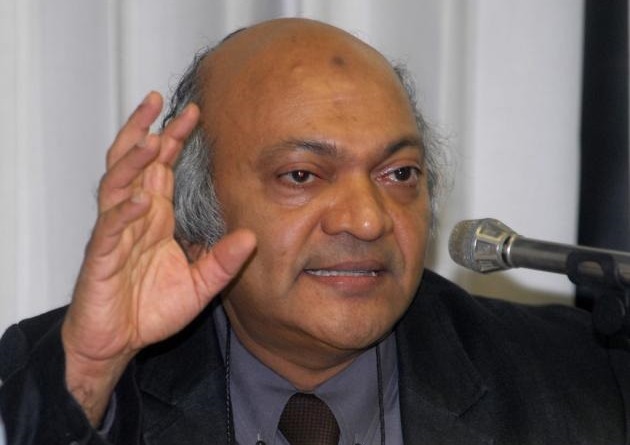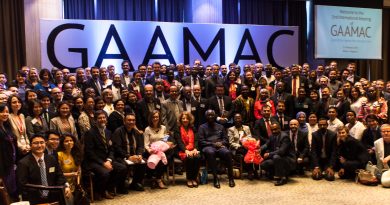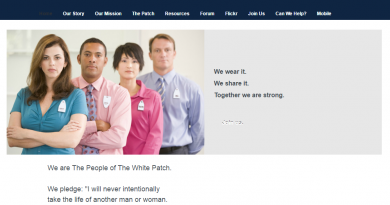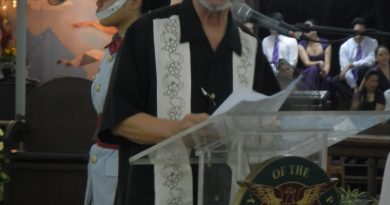Nonkilling Action in Thailand
Recent protests and violence in Thailand has sparked increased efforts by nonkilling advocates in the country. A Facebook community called คนไทยไม่ฆ่ากัน – Nonkilling Thai Society was created on November 30 and in within hours it had over 1,000 likes. The page was a response to an article published by CGNK Governing Council member Chaiwat Satha-Anand, who also teaches political science at Thammasat University. The English translation of the article has just been published at the Bangkok Post and we are reproducing it below.
An open letter to rally leader Suthep Thaugsuban
Published: 30 Nov 2013
Dear Khun Suthep Thaugsuban, you might not remember me. But a long time ago, you kindly gave me a ride from Thammasat University so I could attend prayer time at a mosque in Bang Lamphu.
I am writing this letter with grave concerns that the ongoing conflicts may escalate into violence, which occurred before in the past. But this time, both you and Prime Minister Yingluck Shinawatra have shown a clear stance to confront this crucial conflict without violence.
Allow me then to give you my opinion on the use of non-violence and civil disobedience in protests, hoping to help make it more clearer to your struggle for the future of all sectors in Thai society.
First, there’s the question of whether or not the rally at the Democracy Monument, the blowing of whistles, the calls for the delays of tax payments, and the separate marches to occupy state offices, areare “non-violent”.
My answer: Staging protests by occupying public places is a common use of non-violence. Blowing whistles is a symbolic use of non-violence, too. Calling for tax payment delays is a non-violent means of withdrawing support for the government. Occupation of state offices is also an intervention through non-violence.
The tactic of occupying public places dates back 2,000 years. A Christian bishop refused to obey the Roman government’s order to give part of the church in Milan to Christians of another denomination. That bishop occupied the church for five days. This happened in 385AD.
In 1969, hundreds of native Americans raided Alcatraz Island in San Francisco Bay and held it for two years. (The last 15 people were arrested by the federal government in 1971). Then there was the non-violent occupation of the central economic centres in major cities such as New York, London and Melbourne in 2011. These non-violent methods violate the law to different degrees. But, Mr Suthep, as a legal expert, I am sure you are well aware of this aspect.
Those who want to use non-violent political techniques must understand how to use these tools, as well as the consequences they bring.
When you, Mr Suthep, announced that civil disobedience is the direction of your struggle, it meant that those who follow your lead must be ready to face the punishment from breaking the law. The power of civil disobedience does not come only from the act of disobedience per se, but also from accepting the subsequent punishment that “good” people must endure for violating the law and state policies.
Such acts of disobedience and acceptance of the consequences will alert the public to think about the unjustness of the law that is being violated. This will trigger a deeper conflict in public conscience, to the extent that politicians will be pressured to amend the law or repeal those policies. A good example of this was the African-American civil rights movement led by Rev Martin Luther King during the middle of the last century.
Civil obedience is not the means with which to topple governments or change political regimes. Accepting punishment actually confirms the legitimacy of the one who wields punishment – ie, the state.
In this respect, civil obedience complements the system of representative democracy so that it can operate fully. When those who practise civil disobedience go to jail, when the public conscience is awakened, lawmakers in parliament will realise that some of the laws and state policies are indeed unjust, that they put good citizens in jail, and so must be repealed.
There are hundreds of ways to practise non-violence in fighting against governments. Non-violence can even topple governments, such as what happened in many Latin American countries from 1931 to 1961.
But most governments which were felled by the power of non-violence and popular uprisings were under military dictatorships or military-backed governments. Research shows that non-violence is more effective when used against dictatorships than with governments with electoral legitimacy.
Some people ask me at what point do protest actions cease to be non-violent? My answer is two-fold.
One, many people who practise violence believe that it cannot be used for unjust goals which are not promoting political freedoms. For example, a hunger strike can be a non-violent pressure tactic if it is used against dictatorship or imperialism, to liberate the people. But if a dictator uses a hunger strike to maintain his power, that is not a non-violent practice.
Two, I believe that no matter the goals of the struggle, no matter if they are for democracy or to preserve the important institutions in the country, the means which we call non-violence will lose its meaning when the leader or those in the struggle fail to value other people’s lives.
The lives of everyone, young or old, who sacrifice themselves to challenge the power of the state, have worth. Everyone has people who love and care about them. Every life is sacred and lives cannot be used as tools to achieve any goals.
Finally, there are risks in the use of non-violent tactics against the state – risks from law and of possible violence against you. That one side adheres to non-violence does not necessarily ensure that the other side will stick to the same principle.
For this reason, anyone who stands up against the state must be aware of what risks they are facing, and what goals they want to achieve.
They should therefore be able to visualise the possible outcomes, so they can decide whether or not to fight on, and how.
People use non-violent tactics for various reasons. Most do so because they believe in the power of this approach, as seen by the current situation in Thailand. What is no less important than the effectiveness of non-violence is the belief in people who are using this method, that the future they want to create will grow and blossom on the fertile soil of goodwill, not in animosity bent on mutual destruction.




